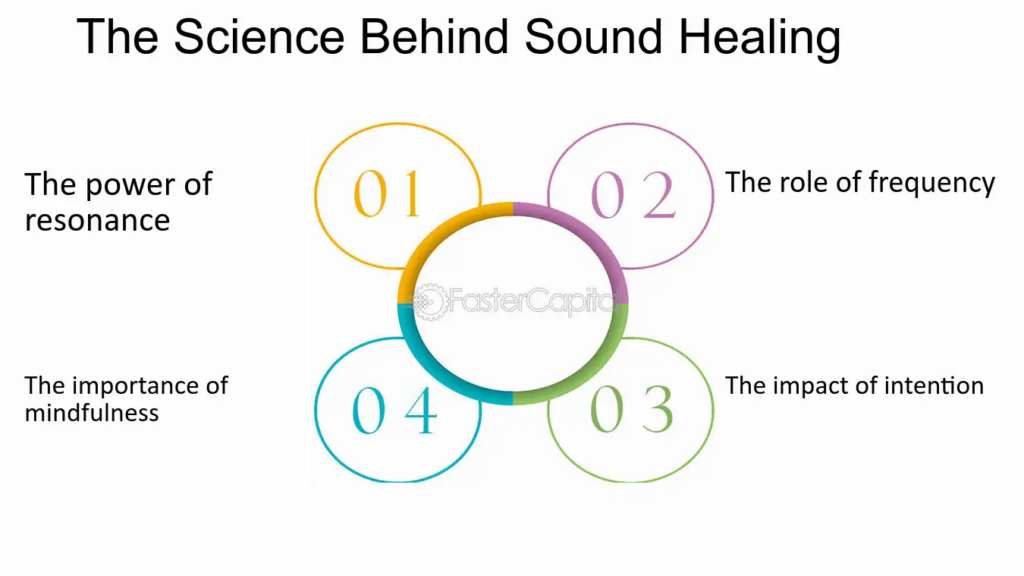
The ancient art of Sound healing has been gaining popularity due to its manifold benefits. However do remember that there are various factors that might hamper its effectiveness.
Do You Know What Is Sound Healing?
Sound healing uses sound frequencies to enhance physical, emotional, and mental well-being by promoting relaxation, clearing blockages, and restoring balance through vibrations and tones.
Sound healing is a comprehensive approach that employs sound frequencies for bettering health, physically, emotionally, and mentally. It has originated from ancient practices in diverse cultures, but it has merged with modern scientific knowledge. The instruments used in sound healing are; singing bowls, tuning forks, gongs and even the human voice.
The main idea behind sound healing is that everything in the universe vibrates at certain frequencies, including our bodies. Imbalances of these frequencies can trigger disharmony, leading to diseases. Sound healing seeks to correct this by exposing the body to beneficial frequencies.
What Are The Things That Can Hamper Sound healing?
Factors that can hamper sound healing include strong external noises, personal resistance to the process, mental distractions, and pre-existing health conditions affecting sensitivity to sound.
Unnecessary and distracting noise can interrupt sound healing sessions. The therapeutic frequencies used during a session may be disturbed by traffic noises, conversation or other electronic devices, making it difficult for participants to concentrate and relax.
The way a room sounds is important in sound healing. Hard surfaces create echoes as well as distortions that affect sound quality. On the other hand, excessive sound absorption by rooms may dampen out beneficial vibrations.
Electronic devices emit electromagnetic fields that can interfere with subtle energies used in sound healing. Participants should be encouraged to switch off or remove their electronic devices from sessions. If possible, choose a place free from wifi routers and other sources of EM radiation.
What Personal Factors Can Interfere With Sound Healing?
Personal factors that can interfere with sound healing include stress, mental distractions, resistance to the process, and emotional blockages, which can affect receptivity and effectiveness.
An individual’s emotions have a significant impact on how they respond to sound therapy. Healing may be hindered due to stress, anxiety or even being skeptical about the whole process. Before starting the session, practitioners must establish an atmosphere of calmness and comfort.
Some people are affected differently by certain physical conditions when it comes to using sound therapy. For instance some individuals may find particular frequency ranges uncomfortable if they have hearing sensitivities or have certain neurologic diseases that cause such discomfort . Therefore , it is important for those responsible for health care delivery to tailor their care appropriately.
The effectiveness of sound therapy will depend upon one’s belief system about it. Negative expectations or skepticism could create mental blocks that bar further recovery processes. Thus, teaching the principles behind sound healing can help participants overcome this obstacle.
How To Improve the Effectiveness of Sound Healing?
To improve sound healing effectiveness, create a calm environment, stay open and relaxed, focus on the sound, and address any emotional or mental blockages.

For maximum results from sound healing, dedicate a space that facilitates relaxation and attention. Use soft seating or mats, dim lighting to mild, warm tones, and maintain reasonable temperatures.
Before engaging in this activity you need to get prepared first. To calm your mind, practice deep breathing techniques or meditation. Ensure you are well hydrated by drinking lots of fluids especially water. Avoid heavy meals prior to your session. Put on loose fitting clothes which will let energy flow freely within your body.
Look at factors such as training, experience, and approach when selecting a sound healer. Do not hesitate to ask about their methods and philosophies.
With sound therapy benefits last even after sessions it is important that one includes mindfulness exercises in their everyday lives so as to maintain such balance and harmony. Some people opt to keep diaries where they write down all these experiences including any changes in their health statuses.

Why do I feel tired after a sound bath?
Feeling tired after a sound bath is often due to deep relaxation, energy shifts, or emotional release, which can temporarily drain your energy.
After a sound bath, one can feel tired because it deeply relaxes the body, which allows your body to let go of tensions and stresses, resulting in restorative fatigue.
What are the disadvantages of sound baths?
Disadvantages of sound baths include potential discomfort from prolonged sound exposure, possible emotional release that feels overwhelming, and limited scientific evidence on their effectiveness for some individuals.
Some negatives of sound baths include distress from extended exposure to particular frequencies and potential overwhelming emotional release. Some even expect it to replace conventional medical treatment.
Who should not use singing bowls?
People with certain medical conditions, such as severe sound sensitivity, epilepsy, or heart conditions, should avoid singing bowls and consult a healthcare provider before use.
People who have sensitivity to sounds, epilepsy, certain mental health conditions, or are pregnant should consult healthcare providers before using a singing bowl as sometimes vibrations and sounds may be disruptive or overstimulating.
What to expect after a sound healing session?
After a sound healing session, you may experience deep relaxation, emotional release, enhanced clarity, improved mood, or temporary fatigue as your body processes the healing effects.
After a Sound Healing Session, you might experience deep relaxation, emotional release, increased clarity, or exhaustion. For detoxification purposes drink plenty of water so that the body can handle whatever effects have been produced through the session.
Why do you need to drink water after a sound bath?
Drinking water after a sound bath helps flush out toxins released during the session, aids in rehydration, and supports the body’s natural detoxification process.
Water helps flush toxins released during the session, supports natural detoxification processes, and maintains a fluid level that enhances sound healing benefits’ Hence experts recommend taking water immediately after a session.
What do singing bowls do to the brain?
Singing bowls can induce relaxation, reduce stress, and alter brainwave patterns, promoting a meditative state and potentially enhancing emotional and mental well-being.
Singing bowls can facilitate meditation, lower stress levels, improve cognitive functioning, and enhance mood by modulating brain wave frequency to induce calmness and peace within oneself.
Do singing bowls open chakras?
Singing bowls are believed to help open and balance chakras by using sound frequencies to clear energy blockages and promote harmony in the energy centers.
With each bowl corresponding to a specific chakra, singing bowls are believed to facilitate the opening and balancing of such energy centers thus promoting flow and alignment in terms of body energy.
What is the truth about sound healing?
Sound healing promotes relaxation and stress reduction, with anecdotal benefits reported, but scientific evidence is limited; it is best used as a complementary therapy.
This involves the use of sound frequencies as therapy for physical and emotional health. Although some are based on evidence from research, others rely on personal accounts and experiences.
Final Thoughts
Sound healing takes a different perspective towards wellness, but its effectiveness can be affected by several issues. These challenges can be overcome by practitioners or participants involved in sound healing so that it can be more effective. Some examples include; creating optimum environments for these sessions; mental/physical preparation before these sessions and selecting experts for maximum benefit.

